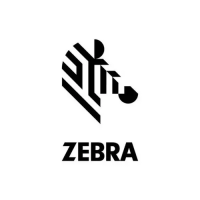13 - 2 DS8108 Digital Scanner Product Reference Guide
Bar Code Acceptance Test
Upon decoding a bar code, the scanner checks that the bar code fits the description of a bar code that anchors or
links to an IDC form. To be accepted as an IDC bar code:
•
The symbology must be enabled for decode, and also enabled via IDC Symbology on page 13-8. The IDC
firmware allows enabling between zero and eight symbologies simultaneously:
Code 128, Code 39, Interleaved 2 of 5, Discrete 2 of 5, Codabar, PDF417, Data Matrix, and EAN-128.
•
The decoded data must satisfy the values set in the IDC Minimum Text Length and IDC Maximum Text
Length parameters. To disable either of these checks, set the value to zero.
If the bar code does not satisfy both requirements, it is sent as a normal (non-IDC) decode.
An IDC bar code is required when IDC Operating Mode on page 13-7 is set to Anchored or Linked.
Free-Form operating mode does not require a bar code, but transmits decoded data if one is found and satisfies
the requirements. If no bar code is decoded, the document capture process starts but may require specifying a
non-zero value for the IDC Delay Time on page 13-17. The scanner must wait for at least this amount of time after
trigger pull before capturing a document, unless a bar code is decoded before the time expires.
If Picklist Mode on page 9-22 is enabled, the bar code must be directly under the aiming pattern and within the
scanner’s decode range, and the region to capture must be completely within the scanner's field-of-view.
Capture Region Determination
After accepting an IDC bar code, the firmware establishes the region to capture as an image. The method used
depends on the setting of the IDC Operating Mode as follows.
The IDC firmware emits a single low beep after successfully capturing a region. The scanner is then no longer
capturing images and can be moved without disturbing the IDC output. Be sure to hold the trigger button until the
decode beep, otherwise the IDC process may be aborted.
IDC Operating Mode = Anchored
A coordinate system is built based on the bar code in its rectified (de-skewed) form. The origin is the center of the
bar code, and the x-axis is set toward the right, from the bar code's point of view. The unit module width of the bar
code is the unit for x. Similarly, the y-axis is set toward the up direction. The unit for the y-axis is specified via the
parameter IDC Aspect on page 13-11. This is the aspect ratio of a thin bar or space - the bar code's height is
divided by this value to get this unit. Set IDC Aspect to zero to automatically calculate the aspect ratio. The bar
code can be of different sizes for the same form, as long as the center of the bar code is the same when the bar
code's length changes.
From this coordinate system, the IDC area is determined using four parameters: offsets in x and y (IDC X
Coordinate, IDC Y Coordinate) to the region's top-left corner, and width and height (IDC Width, IDC Height).
If the capture area is relatively large as compared to the bar code area, the calculation to obtain the capture area is
prone to significant errors. A recommended solution is to enclose the form with a single black-lined rectangular
border (a box), which is not in contact with any other line on the outside of the form (although it can be connected
to lines on the inside of the form). When the IDC Find Box Outline is set, the firmware searches for the box, and
does not decode if any edges are broken (such as by a protruding thumb).
The IDC Zoom Limit parameter controls the quality of the captured form. The IDC firmware rejects capturing a form
unless the width is at least the IDC Zoom Limit percentage of the IDC Width parameter. For example, if IDC Zoom
Limit is set to 100 and IDC Width is set to 150, the form must be at least 300 pixels wide before it is captured (each
unit module is scaled to two pixels).

